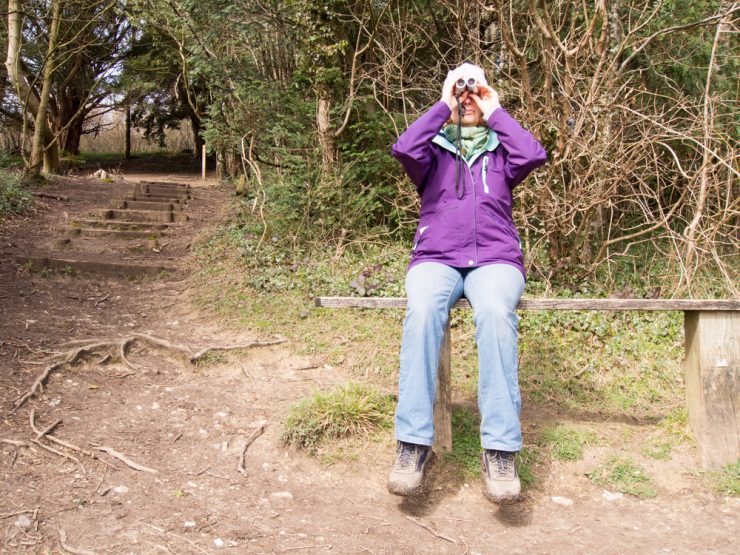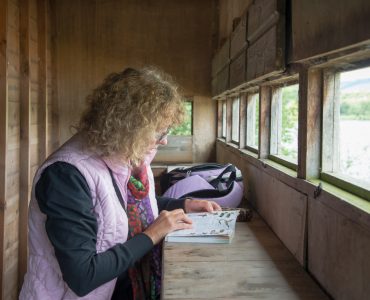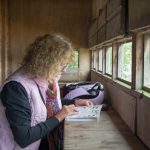The redstarts are small birds, very similar in appearance to the robins, however with slightly longer tail feathers. The tail is a unique feature in these birds, constantly quivering in an up down motion. The tail feathers and the rump of the bird are coloured a bright orange cum reddish shade, while all the feathers on the central body region are coloured brown. The bill and the legs of the redstart are completely black in colour. During summer time, the male bird looks exceptionally handsome, with its upper body portions coloured a bluish grey shade. The face is a strong black colour and the throat also adds to the striking appearance, being black. The forehead though is a white contrast along with the eyebrows, while the flanks and the frontal breasts are orange in colour.
The female redstart is comparatively less bright than the male, with a greyish brown upper body and the under areas being an orange brown shade. The belly of the female bird has whitish colouration and the eye ring is a very pale shade. During winter time, both male and female birds tend to become more of a brown shade and less of the striking black colour. The juvenile young ones of the redstarts are coloured a mottled brown, and due to this are more often than not confused for the robins or the nightingales.
The scientific name of the redstart is Phoenicurus Phoenicurus, and the fully groan bird can go up to lengths of 13 to 14.5 cm. The bird weighs approximately 12 to 20 grams. This large bird has a wing span of about 21 to 24 cm. the bird is found in the country only during the summer time, and is currently in the amber status in Britain. These birds generally fly in from the western and northern uplands in the summer, coming sometime in the month of April, and leave the country towards the end of September.
The voice of the redstart is a squeaky sound, sort of a warble song. This sound makes it easily distinguishable even if it is not seen. The call of the bird is a very soft sound, like a ‘hweet’, repeated over and over, sometimes the sound may vary to a ‘tick’ like noise, meaning that there is some danger around. This is the alarm call of the redstart. The redstarts are not birds that can live in gardens, and tend to prefer the wooded regions.
Insects and larvae of animals are the main diet of the redstart, though during the autumn season they do feed on fruits and berries. The breeding season of the bird begins in May, with the female producing about 6 to 7 eggs with 2 clutches. Breeding with the redstart can happen at any location, in parks, orchards, woodlands, quarries, gardens etc. the nest is built inside a hole in a tree or rocky area, and is a cup like structure made using moss, hair, wool and dead vegetation by the female. The incubation period lasts about 11 to 14 days, and is handled by the female most of the time.








